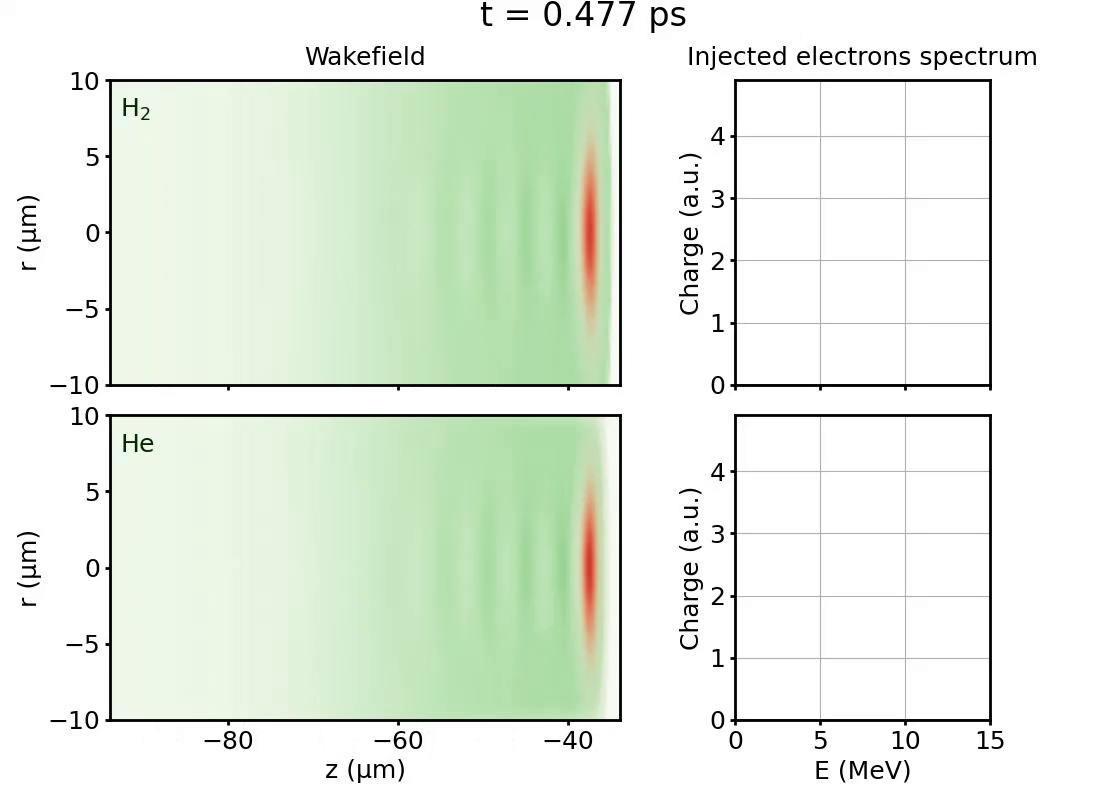Hydrogen improves the performance of a laser-plasma accelerator at kHz
Laser-plasma acceleration is an alternative method of accelerating electrons to relativistic speeds. A powerful laser pulse is focused in a plasma where, thanks to its teravolt-per-metre peak electric field, it generates an accelerator structure capable of producing fields up to 10,000 times more powerful than those of traditional RF cavity accelerators. This makes it possible to reach high energies of accelerated electrons over much shorter distances.
The APPLI group at LOA is focusing on developing a high-repetition-rate (kHz) laser-plasma accelerator. They are using the terawatt laser in Salle Noire 2, delivering pulses of 4 fs and a few milli-joules, focused on a continuously flowing gas target. In a new paper published in Physical Review Research, they report on their latest work, examining in detail the influence of the nature of the gas on the accelerator’s performance.
The results show that hydrogen offers the best performance, both in terms of electron energy and the spatial quality of the beam produced. The quasi-monoenergetic electron beam reaching up to 10 MeV has an angular divergence of 15 mrad and a charge of 2 pC per pulse. This represents a significant improvement on the performance previously demonstrated: the energy is tripled, and the divergence divided by 5, while keeping nearly the same charge.
Continuous operation at a repetition rate of 1 kHz with a hydrogen target was made possible by the development of a differential pumping system, whereas previous similar experiments in hydrogen operated in burst mode only.
Numerical simulations were used to interpret these observations. They show that, in helium and nitrogen, ionisation effects distort the laser pulse and degrade acceleration performance. These effects are drastically reduced in hydrogen, which improves the quality of the accelerated electron beams.
These results underline the importance of hydrogen as a target gas for high-repetition-rate laser-plasma accelerators, even if this brings with it numerous technical constraints in terms of safety and pumping.
Find the open-access publication here:
Results of numerical simulations. On the left we follow the laser pulse, shown in orange, which propagates along the z-direction through the plasma whose electron density is shown in green. The electrons injected into the wakefield accelerator appear as orange dots. The spectrum of these electrons is shown on the right. Above, the result for hydrogen, below for helium.



